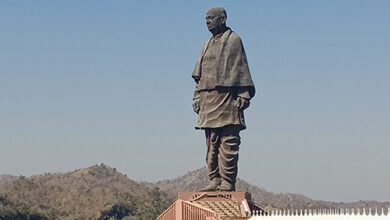
What Is Operation Sindoor? Understanding India's Military Response and Its Global Implications

On the morning of May 7, 2025, the world awoke to a startling headline: India had launched a military operation named Operation Sindoor against Pakistan. This unprecedented move marked a significant escalation in the long-standing Kashmir conflict, drawing global attention and concern.
The Catalyst: The Pahalgam Attack
The immediate trigger for Operation Sindoor was a terrorist attack on April 22, 2025, in Pahalgam, Indian-administered Kashmir. The attack resulted in the tragic deaths of 26 civilians, primarily Hindu tourists. The assailants, identified as members of The Resistance Front—a Pakistan-based militant group—separated men from women and children before opening fire, a tactic that underscored the brutality of the assault .
This massacre was not just a tragic loss of life; it was a direct challenge to the fragile peace in the region and a blow to the burgeoning tourism industry in Kashmir, which had seen a record 23 million visitors in 2024 .
Operation Sindoor: A Surgical Strike
In response, India initiated Operation Sindoor on May 7, 2025. The operation involved 14 airstrikes targeting nine locations across Pakistani-administered Kashmir and Pakistan’s Punjab province. These strikes were carried out by the Indian Air Force using Rafale aircraft equipped with SCALP missiles and AASM Hammer bombs, along with BrahMos cruise missiles and Indo-Israeli SkyStriker loitering munitions .
The Indian government described the operation as “focused, measured, and non-escalatory,” emphasizing that no Pakistani military facilities were targeted. Instead, the strikes aimed at dismantling terrorist infrastructure linked to groups like Jaish-e-Mohammed and Lashkar-e-Taiba
The Aftermath: A Region on Edge
The immediate consequences of Operation Sindoor were severe. Pakistan reported at least 31 civilian casualties and over 50 injuries, condemning the strikes as an “act of war” and vowing retaliation . In the days that followed, both nations engaged in border skirmishes, drone strikes, and missile exchanges, marking the first recorded drone war between two nuclear-armed countries .
International reactions were swift and varied. The United States, European Union, United Kingdom, Russia, China, and even Afghanistan’s Taliban government urged both sides to de-escalate and seek diplomatic solutions. Despite these calls, mutual distrust remained high, and both nations maintained a high state of military readiness .
The Significance of the Name: "Sindoor"
The codename “Sindoor” carries deep cultural and emotional resonance. In Hindu tradition, sindoor is a red powder applied by married women along the parting of their hair, symbolizing their marital status. The name was chosen to honor the victims of the Pahalgam attack, many of whom were Hindu men who left behind widows .
This symbolic gesture underscores the personal and communal grief that fueled the operation, transforming a military response into a deeply emotional act of remembrance and retribution.
Also Read: Take Back Your Remote
A Broader Context: The Kashmir Conflict
To fully grasp the gravity of Operation Sindoor, it’s essential to understand the historical context. The Kashmir conflict dates back to 1947, following the partition of British India. Both India and Pakistan claim the region in its entirety, leading to multiple wars and ongoing tensions .
The 2025 escalation represents the most serious breakdown in India-Pakistan relations since the 1971 war. The collapse of bilateral agreements, such as the Indus Waters Treaty and the 1972 Simla Agreement, has left both nations in a state of heightened alert and uncertainty.
The Global Implications
The escalation of the Kashmir conflict has far-reaching implications. As nuclear-armed nations, both India and Pakistan possess significant military capabilities, including over 160 nuclear warheads each . The use of advanced weaponry, such as SCALP missiles and BrahMos cruise missiles, in densely populated areas raises concerns about the potential for catastrophic civilian casualties and environmental damage.
Moreover, the conflict has disrupted regional stability, affecting trade routes, air travel, and diplomatic relations. The international community faces the pressing challenge of mediating between two nations with deeply entrenched positions and a history of mistrust.
Conclusion: A Call for Peace
Operation Sindoor serves as a stark reminder of the fragile peace in South Asia and the devastating consequences of unresolved conflicts. While the operation may have been intended as a targeted response to terrorism, it has inadvertently intensified hostilities and drawn the region closer to the brink of full-scale war.
In the face of such peril, the need for dialogue, diplomacy, and mutual understanding has never been more urgent. As the world watches, the hope remains that both India and Pakistan will choose the path of peace, prioritizing the lives and futures of their citizens over the perpetuation of conflict.
Also Read: Statue Of Unity



